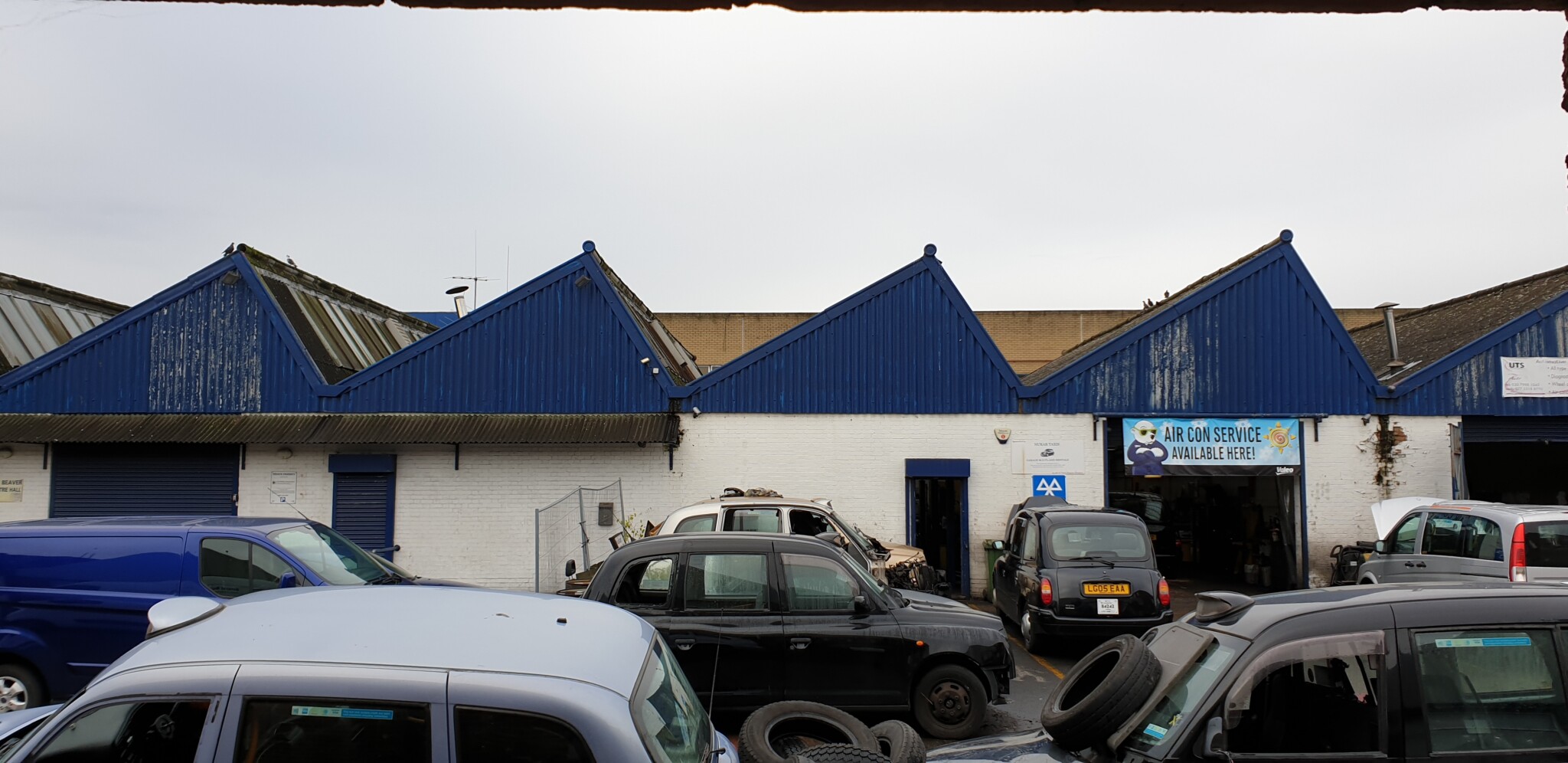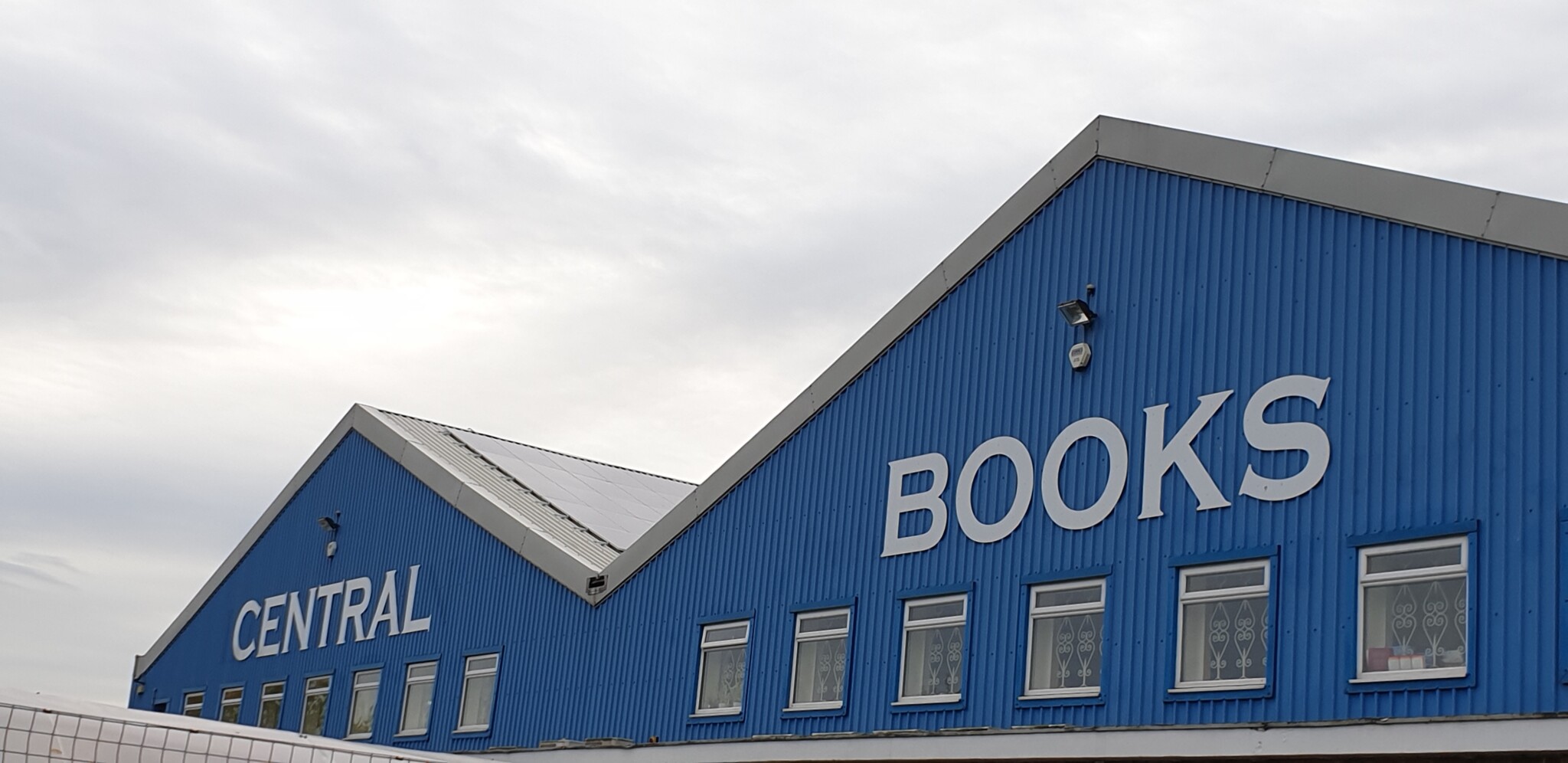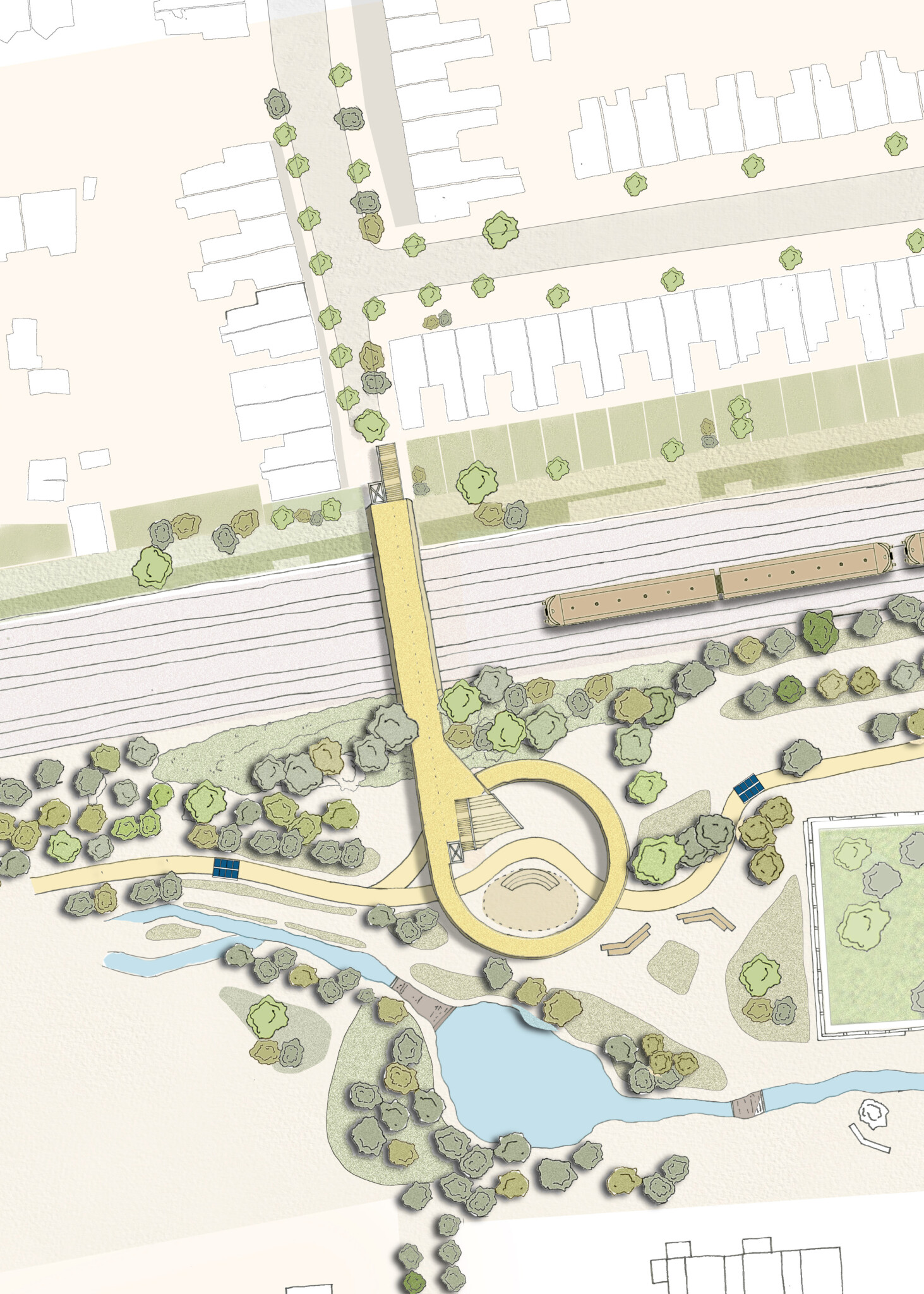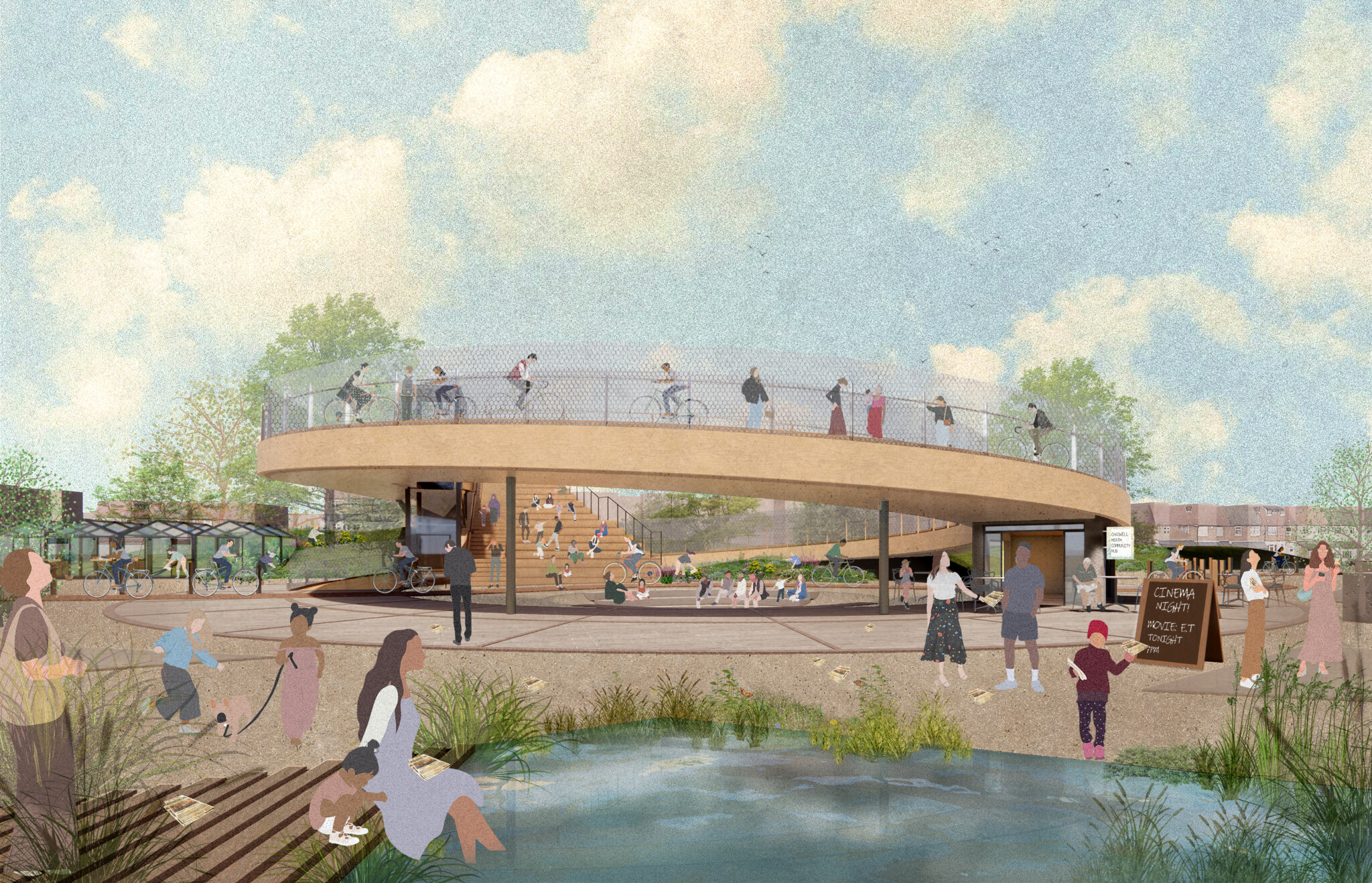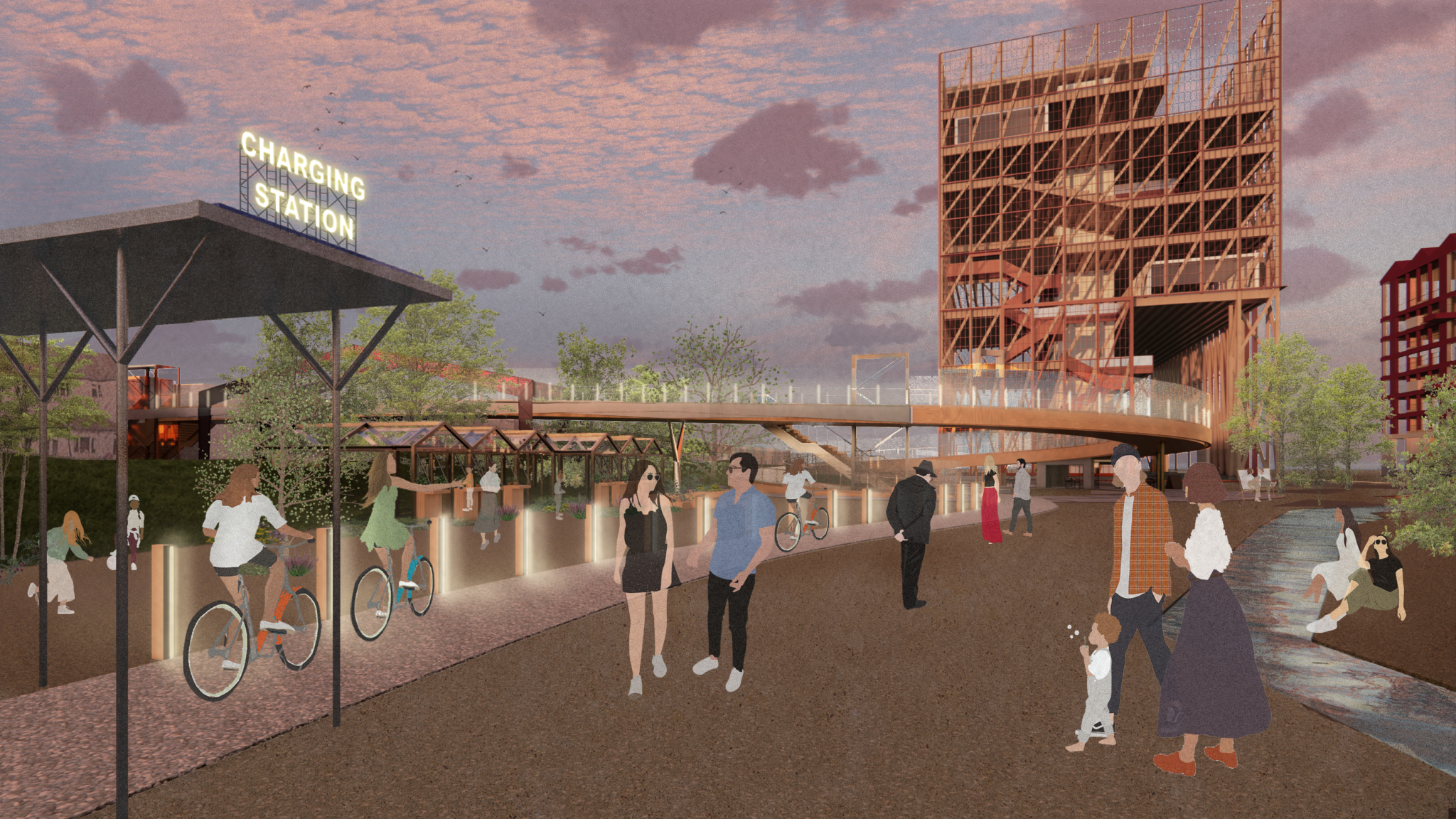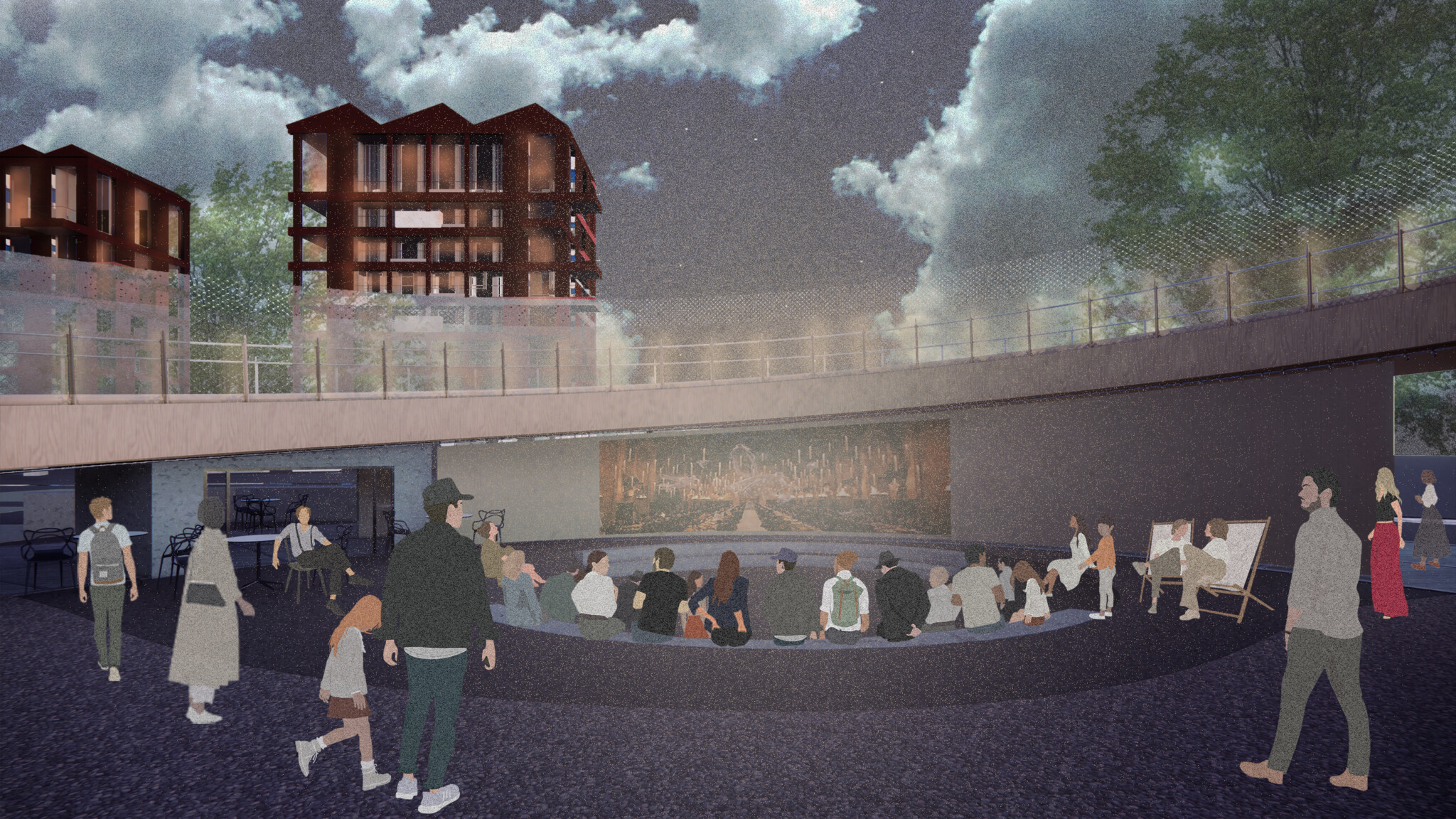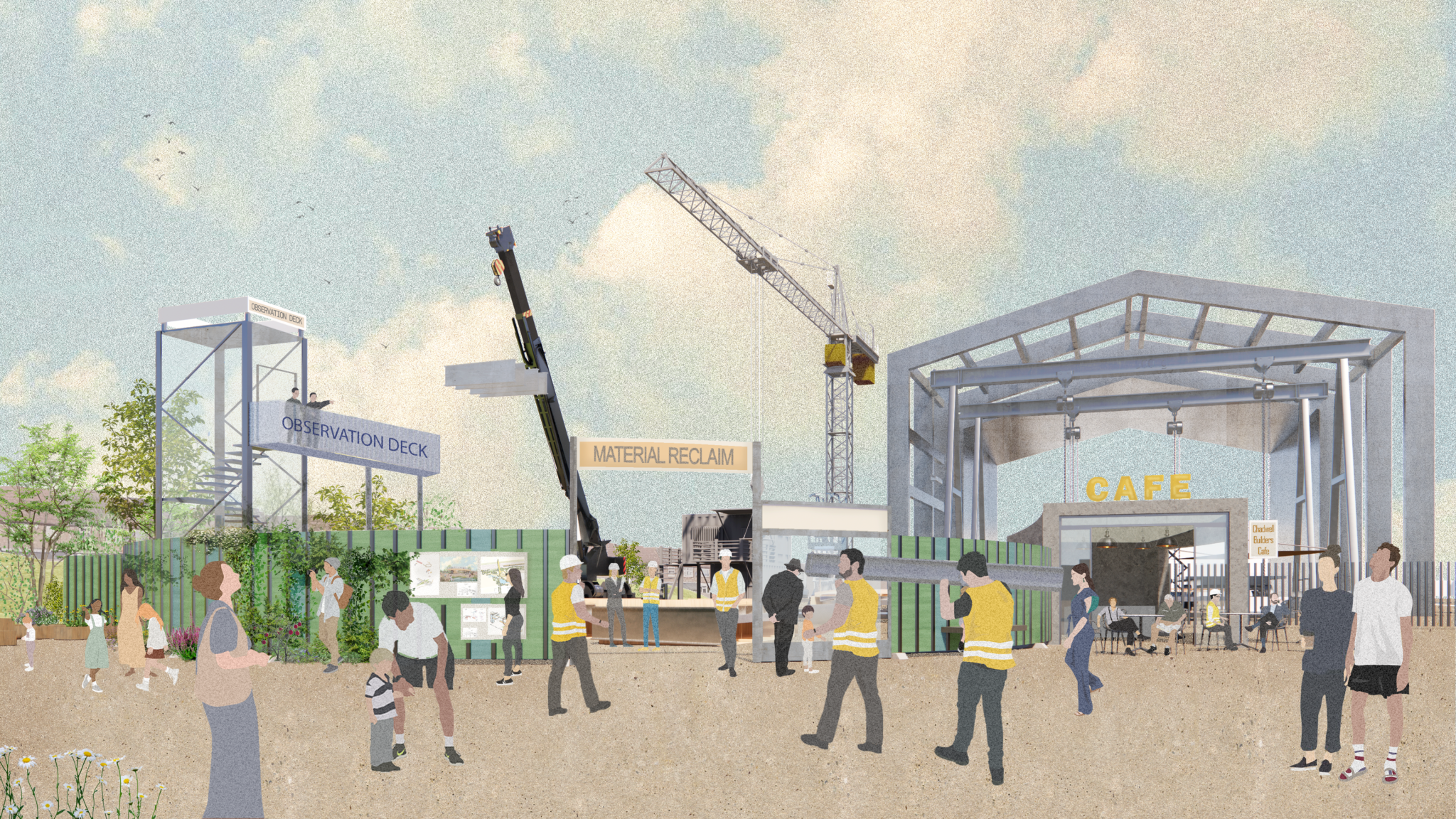An innovative piece of infrastructure stimulating transformational growth for the community in Chadwell HeathHaptic GreenPlayUKUrban
Qualify
Conceive
Refine

The London Plan encourages higher density around Transport Interchanges, these development sites often sit against major transport infrastructure lines, severing them from their surrounding neighbourhoods.
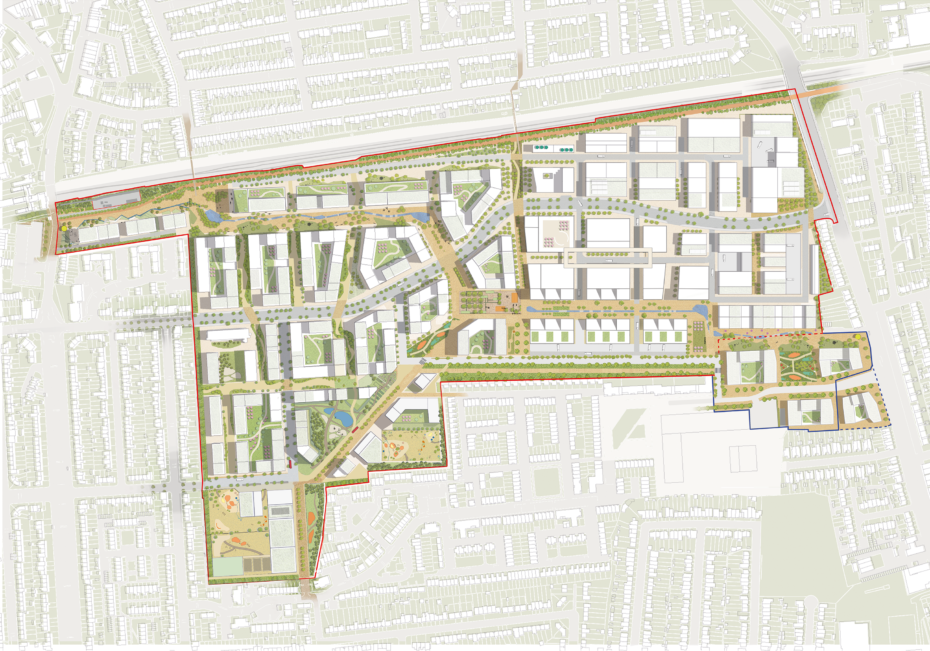
We chose to focus on one such area that we know very well, Chadwell Heath Station. The station provides great access for the local residents moving in and around the city, but at the local level the rail lines dramatically severs the surrounding communities.


The Chadwell Heath Transformation Area is a vision for a new neighbourhood, planned on a post-industrial site disconnected from its surroundings, with poor infrastructure and multiple ownerships. The proposal is a creative strategy for intensifying the site with new uses, delivering around 3,500 new homes, open space and schools alongside an ambitious mix of industry and workplaces.

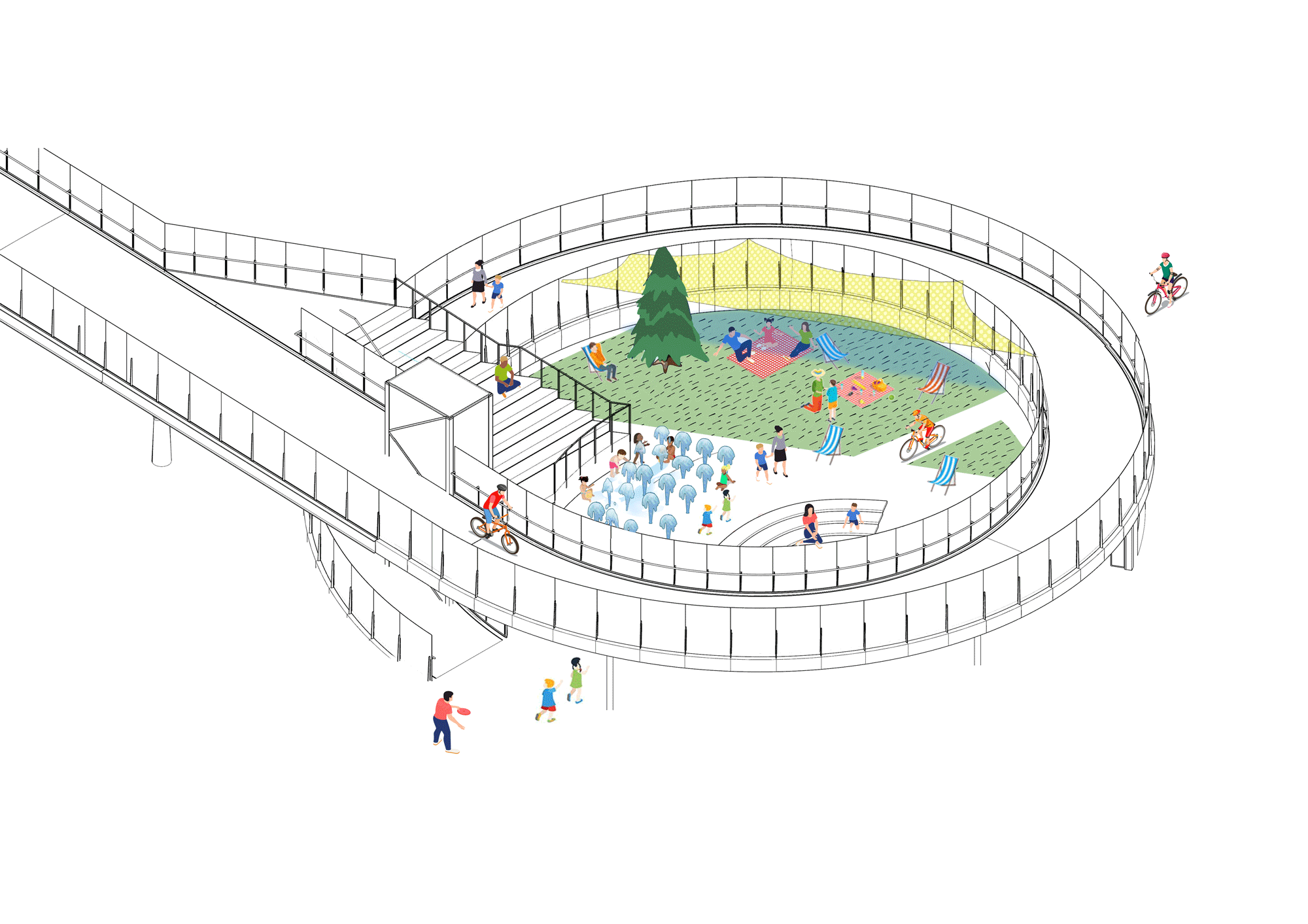
What if a piece of infrastructure could foster transformational growth for both existing and new communities?

Beyond creating new connections, widening access, promoting active travel and generating climate resilience, the proposal provides authorship to local residents and businesses, to add social and economic value to the area. In line with the Healthy Street Principles, the bridge provides inclusive access for all and a public space that is flexible, programmable and focuses on the community with opportunity for further growth.
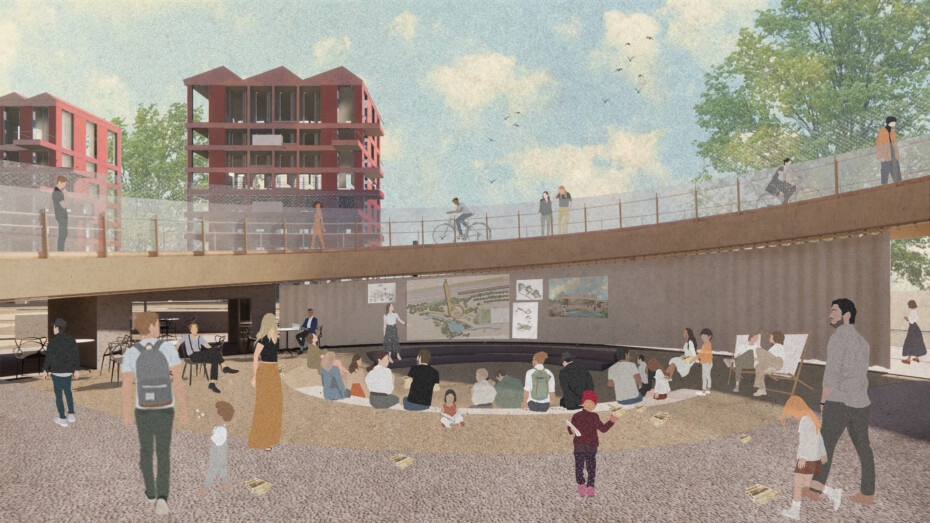
Delivering a net-zero city by 2030, London needs to look beyond quick wins. Looking to the local area, the industrial structures are abundant with re-usable material. In line with Design for a Circular Economy Primer, through careful disassembly, the primary structural steel elements form the bridge’s main structure, smaller steel purlins provide secondary support, reducing the structure’s embodied carbon by up to 96%.
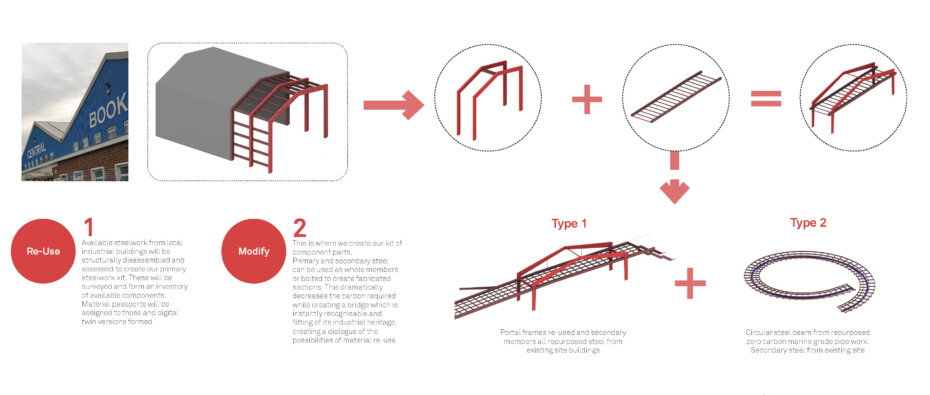
Through innovative reuse the embodied carbon of the structure can be reduced by up to 96%.
Continued engagement with the community was planned in from the outset, going beyond statutory requirements. By allowing conversations early, and frequently, the needs of the existing and future communities can be heard and help shape the design.



The public space formed within the bridge design can be used by the community group whilst also enabling other temporary uses throughout the day and night for the wider community.
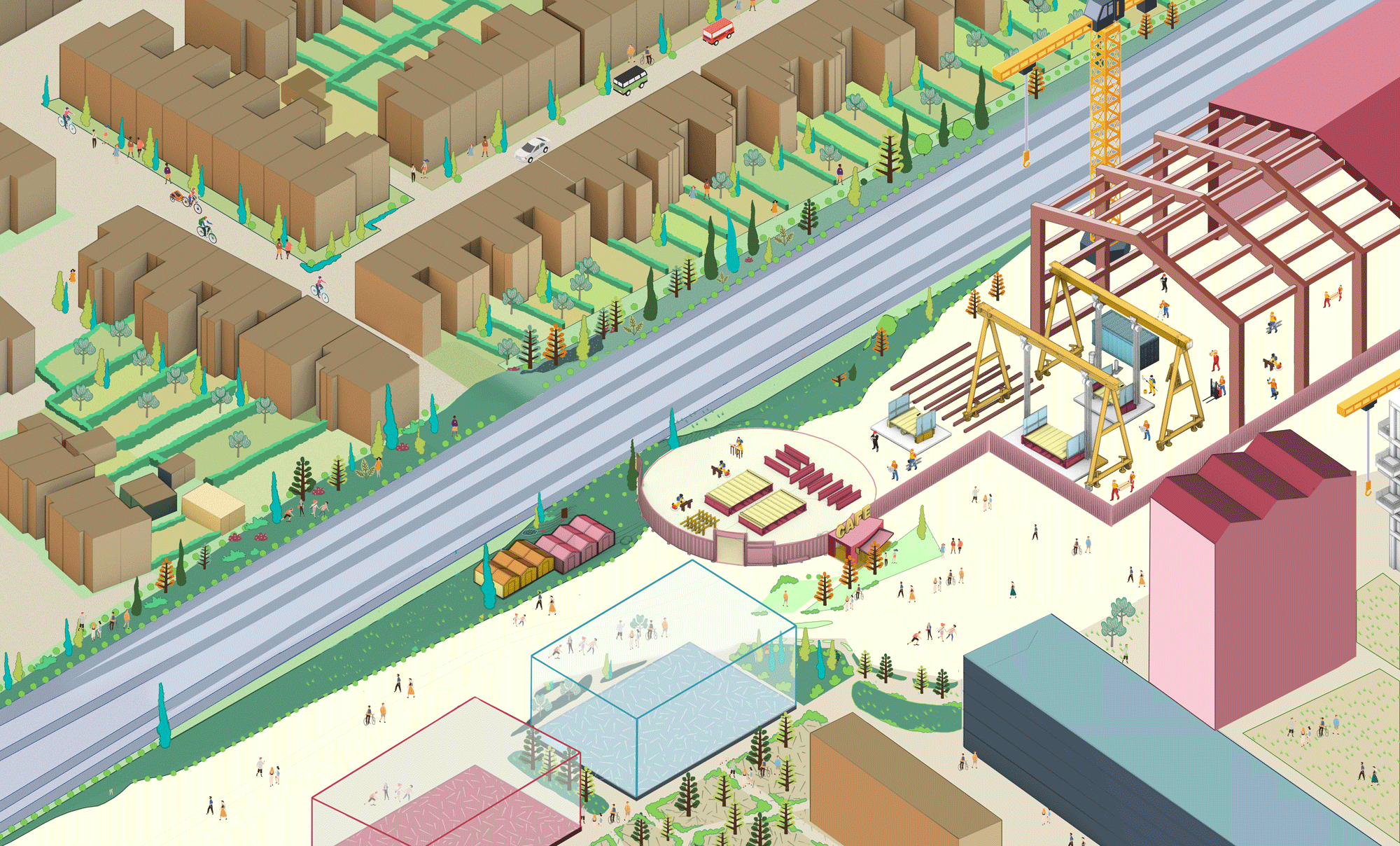
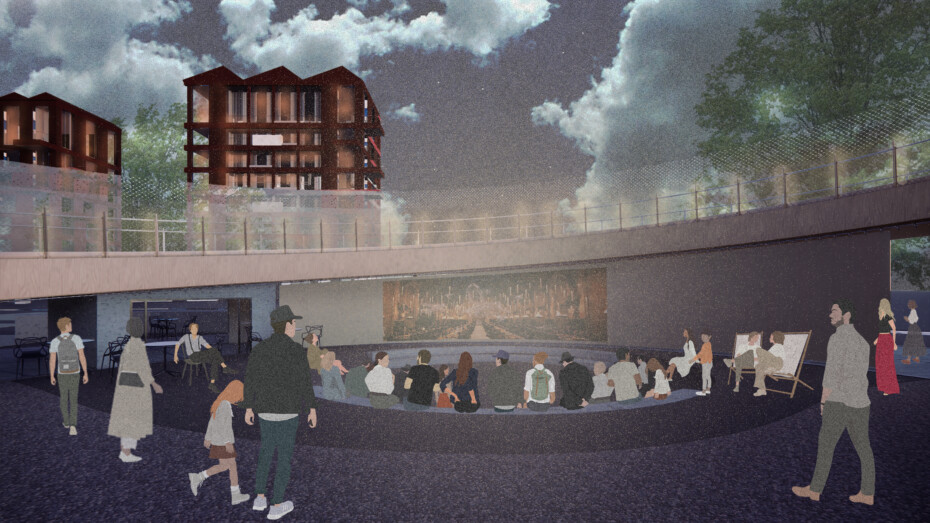

During meanwhile Phase 1 construction the site will promote interest and activity within the community; the community garden will be established, view holes and an observation deck provide an opportunity to see the construction take shape, and initiatives such as apprenticeships with the local Barking and Dagenham College will create local jobs, learning how to build with adaptive re-use sustainable principles.






